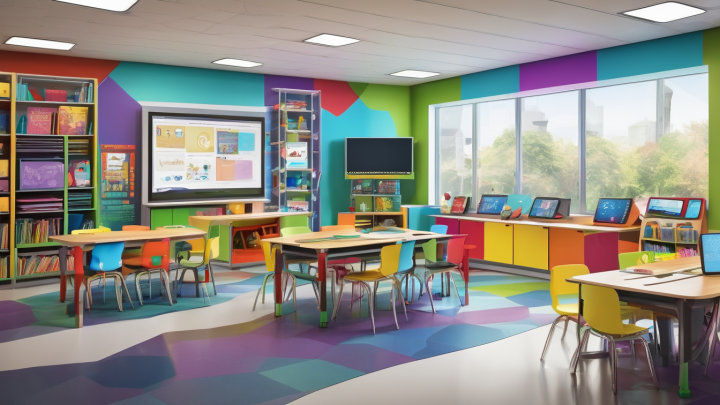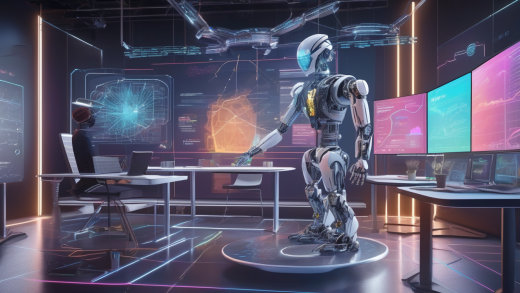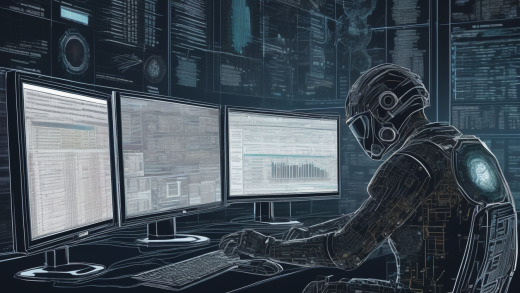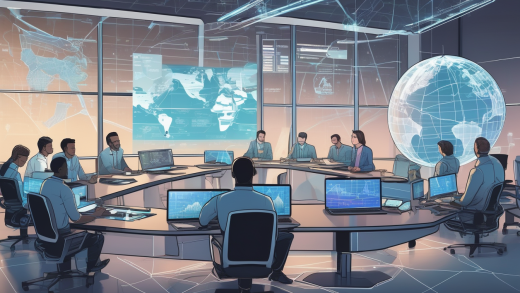As we stand on the brink of a new educational era, artificial intelligence (AI) is emerging as a game-changer in the classroom. Imagine a world where each student has a personalized learning experience tailored just for them. Sounds like something out of a sci-fi movie, right? But the reality is that AI is already reshaping how we teach and learn. From smart algorithms that adapt to individual learning styles to automated grading systems that free up teachers’ time, the integration of AI in education is not just a trend—it’s a revolution.
Over the past few years, we’ve witnessed an astonishing surge in the adoption of AI technologies within educational institutions. Schools and universities are increasingly leveraging these tools to enhance learning outcomes. For instance, AI can analyze vast amounts of data to identify patterns in student performance, enabling educators to make informed decisions. This shift is not merely about technology; it’s about rethinking the entire educational landscape. Imagine a classroom where every lesson is customized based on real-time feedback—this is the promise of AI.
So, what does personalized learning look like in practice? With AI, students can embark on unique learning journeys that cater to their individual needs. Whether a student struggles with math or excels in literature, AI can adjust the curriculum dynamically. This approach not only boosts engagement but also enhances retention rates. It’s like having a personal tutor available 24/7, guiding students through their educational paths.
Adaptive learning technologies are at the forefront of this transformation. These systems utilize AI to modify content and assessments in real-time. For example, if a student demonstrates mastery of a topic, the system can seamlessly introduce more challenging material. Conversely, if a student is struggling, the technology can provide additional resources and support tailored to their learning style.
The benefits of adaptive learning are profound:
- Improved Engagement: Students are more likely to stay motivated when learning is tailored to their interests and abilities.
- Better Retention Rates: Personalized feedback helps reinforce concepts, leading to deeper understanding.
- Individualized Support: Every student receives the help they need when they need it.
However, the journey to fully integrating adaptive learning technologies is not without its challenges. Issues such as data privacy, resource allocation, and the need for comprehensive teacher training must be addressed. As we embrace these innovations, it’s crucial to navigate these hurdles thoughtfully to maximize the benefits for both educators and students.
AI-driven assessment tools are another exciting aspect of this evolution. These tools automate grading, allowing teachers to focus more on instruction rather than paperwork. They also provide insightful analytics that help educators understand student performance at a granular level. Imagine being able to identify which students need extra help before they even ask for it!
In this new landscape, the role of teachers is evolving. Rather than being the sole source of knowledge, educators are becoming facilitators of learning, guiding students through their personalized educational journeys. This shift emphasizes collaboration between technology and human interaction, ensuring that while AI enhances learning, the essential teacher-student relationship remains strong.
To maximize the potential of AI in education, effective teacher training programs are essential. Educators need to be equipped with the skills and knowledge to harness these technologies effectively. This training will empower them to integrate AI tools into their classrooms seamlessly.
While AI can significantly enhance learning experiences, we must also prioritize the human element. Maintaining a balance between technology and personal interaction is crucial for fostering meaningful teacher-student relationships. After all, education is not just about information; it’s about connection, understanding, and growth.

The Rise of AI in Education
In recent years, the educational landscape has undergone a significant transformation, largely fueled by the rise of artificial intelligence (AI). From smart tutoring systems to automated grading, AI technologies are becoming integral in classrooms around the globe. But what does this mean for educators and students alike? Well, imagine a classroom where every student receives personalized attention, tailored resources, and instant feedback, all thanks to the power of AI. This is not just a futuristic dream; it is happening right now!
The integration of AI in education is not merely a trend; it’s a revolution. With advancements in machine learning and data analytics, educational institutions are leveraging AI to enhance learning experiences. For instance, AI can analyze a student’s performance and learning patterns, enabling educators to identify strengths and weaknesses quickly. This makes it easier to adapt teaching methods accordingly.
Consider the implications:
- Enhanced engagement through interactive learning tools
- Increased efficiency in administrative tasks, allowing teachers to focus more on instruction
- Access to a wealth of resources that cater to various learning styles
These benefits highlight why many schools are embracing AI technologies. However, the journey is not without its hurdles. The implementation of AI in education raises questions about data privacy, equity in access, and the need for adequate teacher training. It’s essential to address these challenges to ensure that AI serves as a tool for empowerment rather than a barrier to learning.
As we move forward, the role of AI in education will only expand. It promises to create a more dynamic and responsive educational environment, one where learning is personalized and accessible to all. The question is: are we ready to embrace this change? The future of teaching is not just about technology; it’s about how we can effectively integrate it to enhance the educational experience for everyone involved.
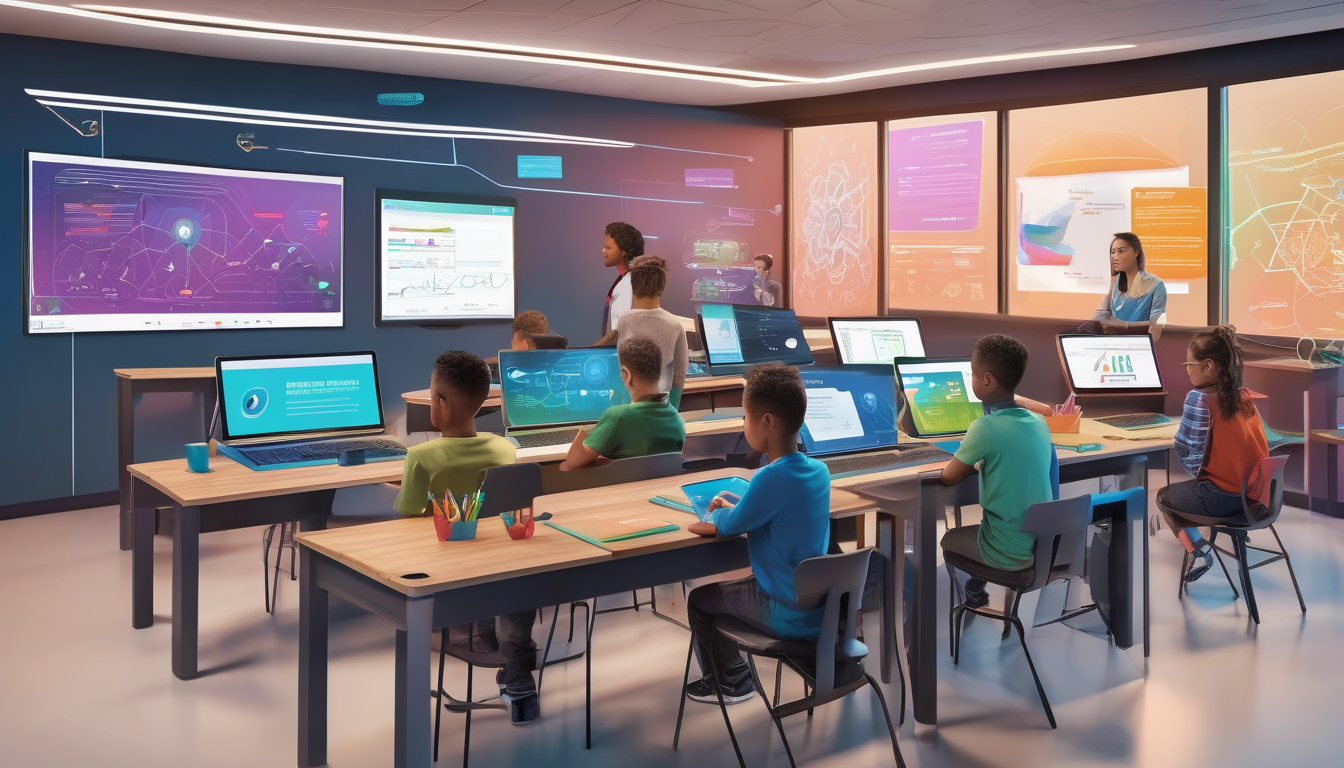
Personalized Learning Experiences
In today’s fast-paced world, the **traditional one-size-fits-all** approach to education is becoming increasingly outdated. Enter **artificial intelligence**, a game-changer that tailors learning experiences to meet the unique needs of each student. Imagine a classroom where every lesson is as unique as the student sitting in front of the screen! With AI, this is not just a dream; it’s becoming a reality.
AI technologies can analyze a student’s learning habits and preferences, creating **personalized learning paths** that adapt in real-time. For instance, if a student excels in math but struggles with reading comprehension, the AI can adjust the curriculum accordingly, providing more resources and practice in reading while allowing the student to progress in math. This level of customization ensures that no student is left behind and that every learner can thrive at their own pace.
One of the most significant advancements in personalized learning is the development of **adaptive learning technologies**. These systems use algorithms to assess a student’s performance continuously and modify the content and assessments based on their progress. This means that lessons can be **dynamic**, changing as the student learns, rather than static and predetermined. For example, if a student struggles with a particular concept, the system can offer additional exercises or alternative explanations until they grasp the material.
The benefits of these technologies are vast. Not only do they enhance **student engagement**, but they also lead to better retention rates and personalized feedback. Students are more likely to stay interested in their studies when they feel the material is relevant and tailored to their needs. Furthermore, teachers can receive valuable insights into each student’s performance, enabling them to provide targeted support where it’s needed most.
However, the road to implementing these adaptive learning systems is not without its bumps. Challenges such as **data privacy concerns**, resource allocation, and the necessity for comprehensive teacher training must be addressed. Educators need to be equipped with the skills to utilize these technologies effectively, ensuring a smooth transition into this new era of education.
Adaptive Learning Technologies
Imagine stepping into a classroom where each student is on a unique learning journey, tailored just for them. make this dream a reality. These innovative systems utilize artificial intelligence to analyze individual student performance and adjust educational content in real-time. This means that whether a student is struggling with a concept or racing ahead, the learning material can shift to meet their specific needs, creating a truly personalized experience.
At the heart of adaptive learning is the ability to modify content based on various factors, such as:
- Learning Pace: Some students grasp concepts quickly, while others may need more time. Adaptive systems can slow down or speed up the material accordingly.
- Learning Style: Each student has a unique way of absorbing information, whether through visual aids, hands-on activities, or auditory instructions.
- Previous Knowledge: By assessing what students already know, these technologies can skip over content they’ve mastered and focus on new challenges.
This level of customization not only enhances engagement but also significantly improves retention rates. When students receive personalized feedback that resonates with their learning style, they are more likely to grasp the material and retain it long-term. It’s like having a personal coach who knows exactly how to motivate and guide you through your learning process.
However, while the potential of adaptive learning technologies is immense, it’s essential to recognize the challenges they bring. Issues such as data privacy, the need for adequate resources, and comprehensive teacher training are critical to address. Without proper implementation, the benefits of these technologies could be overshadowed by concerns and logistical hurdles.
In conclusion, adaptive learning technologies represent a significant leap forward in education, promising a future where every student can thrive on their own terms. By embracing these tools, we can create an environment where learning is not just a one-size-fits-all approach but a vibrant tapestry of individual journeys.
Benefits of Adaptive Learning
Adaptive learning technologies are revolutionizing the educational landscape, offering a plethora of benefits that cater to the unique needs of each student. Imagine a classroom where every student is engaged, learning at their own pace, and receiving instant feedback tailored just for them. This is not just a dream; it’s the reality that adaptive learning brings to the table.
One significant advantage of adaptive learning is the enhanced engagement it fosters. By providing customized content that resonates with individual interests and learning styles, students are more likely to stay motivated and invested in their education. Additionally, adaptive systems can adjust the difficulty of tasks in real-time, which helps maintain an optimal challenge level, preventing frustration or boredom.
Moreover, the improved retention rates associated with adaptive learning are noteworthy. When students engage with material that is specifically designed for them, they are more likely to internalize information. This personalized approach not only boosts understanding but also encourages a deeper exploration of subjects, leading to a more profound educational experience.
Another compelling benefit is the provision of personalized feedback. Adaptive learning platforms can analyze a student’s performance and offer insights that guide their learning journey. This feedback loop not only helps students identify areas for improvement but also empowers them to take charge of their learning process.
While the advantages are plentiful, it’s essential to recognize that the implementation of adaptive learning systems does come with its challenges. However, the potential for creating a more inclusive and effective learning environment is undeniable. In a world where education must evolve, adaptive learning stands out as a beacon of hope, promising a future where every learner can thrive.
Challenges of Implementation
Implementing adaptive learning systems in education is like trying to fit a square peg into a round hole; it’s not always straightforward. While the potential benefits are enticing, several challenges can hinder the smooth integration of these technologies into classrooms. One major concern is data privacy. With the collection of student data to personalize learning experiences, schools must navigate the complex landscape of data protection laws and ensure that student information is handled responsibly.
Another challenge lies in resource allocation. Schools often face budget constraints that limit their ability to invest in the necessary technology and infrastructure. This can lead to disparities between institutions, where some students have access to cutting-edge tools while others are left behind. Furthermore, the need for teacher training cannot be overstated. Educators must be equipped with the skills and knowledge to utilize AI tools effectively, which requires ongoing professional development and support.
In addition to these practical challenges, there is also a cultural shift that needs to occur within educational institutions. Teachers and administrators may feel apprehensive about relying on AI, fearing that it could undermine their roles. This mindset can create resistance to change, making it difficult to fully embrace the potential of adaptive learning technologies. To overcome these hurdles, schools must foster a culture of innovation, encouraging collaboration between educators and technology to create a more dynamic learning environment.
Ultimately, while the road to implementing AI in education is fraught with challenges, the rewards can be profound. By addressing these issues head-on, educators can pave the way for a future where personalized learning is not just a dream but a reality for every student.
AI-Driven Assessment Tools
In today’s fast-paced educational landscape, are revolutionizing the way we evaluate student performance. Imagine a world where grading is not only faster but also more accurate and insightful! These tools leverage advanced algorithms to automate the grading process, freeing up educators to focus on what they do best—teaching.
One of the most exciting aspects of AI assessment tools is their ability to provide real-time analytics. This means that teachers can receive immediate feedback on student performance, allowing them to identify trends and address learning gaps swiftly. For instance, if a student consistently struggles with a particular concept, the AI can flag this issue and suggest targeted resources for improvement. This level of personalization is a game changer in education!
Moreover, AI-driven assessments can go beyond traditional testing methods. They can analyze a variety of student outputs, from essays to project work, providing a more holistic view of a student’s capabilities. This approach not only enhances the accuracy of assessments but also promotes a deeper understanding of the material. Imagine a teacher receiving a detailed report that highlights not just grades, but also areas where a student excels and where they may need further support!
However, it’s essential to acknowledge that the implementation of these tools comes with its own set of challenges. Issues such as data privacy and the potential for bias in algorithms must be addressed to ensure that all students are treated fairly. Additionally, teachers need proper training to interpret the data these tools provide effectively. Without adequate support, the potential benefits could be lost.
In conclusion, AI-driven assessment tools represent a significant step forward in educational technology. By automating grading and providing actionable insights, they empower educators to enhance their teaching strategies and ultimately improve student learning outcomes. As we embrace these innovations, the future of assessment in education looks brighter than ever!
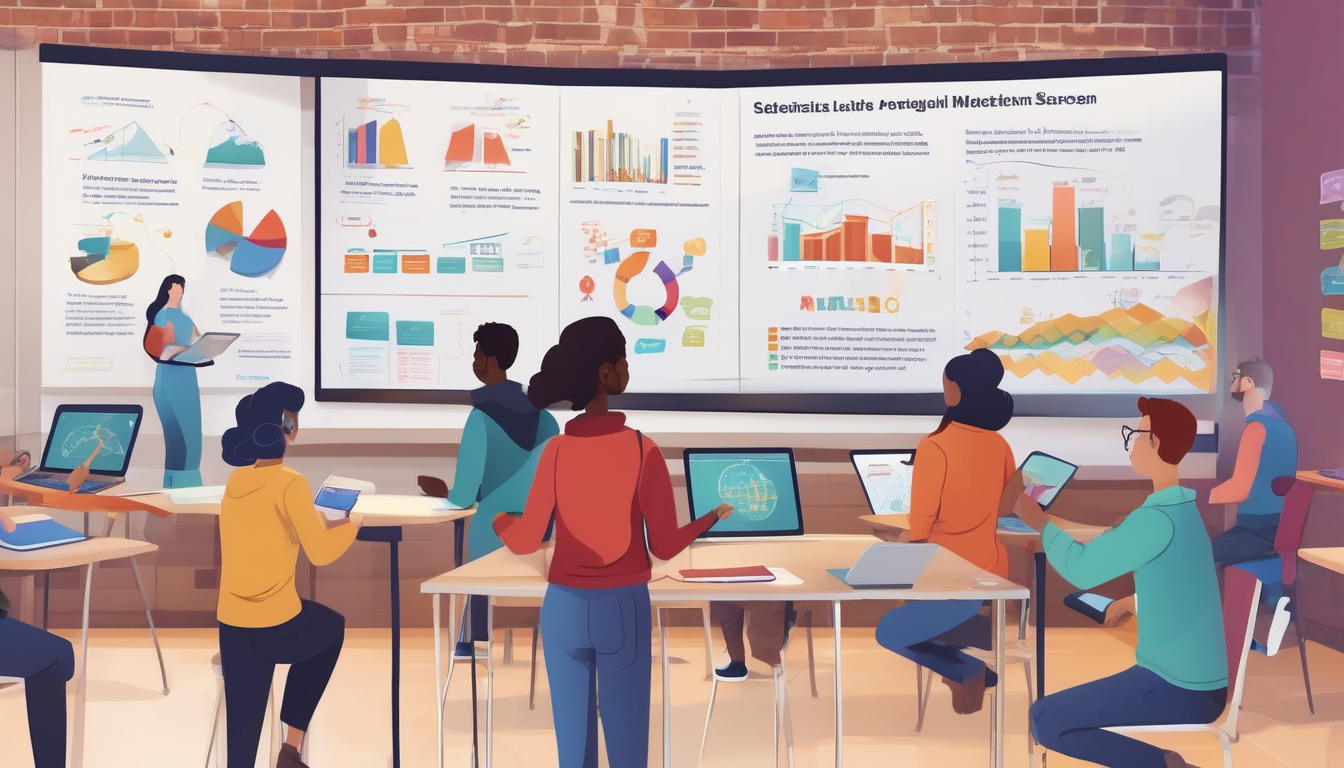
The Role of Educators in an AI-Enhanced Classroom
As we step into a world where artificial intelligence becomes a staple in education, the role of educators is evolving in fascinating ways. Gone are the days when teachers were mere dispensers of knowledge. Now, they are becoming facilitators, guiding students through a landscape enriched by technology. Imagine a classroom where AI not only assists in learning but also provides teachers with invaluable insights into student performance. This shift is monumental, and it’s essential for educators to adapt.
In this new paradigm, teachers must embrace collaboration with AI tools. They can leverage these technologies to create engaging and personalized learning experiences. For instance, AI can analyze a student’s learning style and suggest tailored resources, allowing teachers to focus on what they do best: inspiring and mentoring. However, this doesn’t mean teachers are being replaced. Instead, they are becoming more like coaches in a team, using data-driven insights to support their players—students—in reaching their full potential.
To successfully navigate this transition, effective teacher training programs are crucial. These programs should not only cover how to use AI tools but also emphasize the importance of maintaining a human touch. After all, while technology can enhance learning, the emotional connection between teachers and students is irreplaceable. A well-rounded educator must find a way to balance technology and personal interaction, ensuring that students feel supported and understood.
In summary, the role of educators in an AI-enhanced classroom is multifaceted. They are not just instructors; they are mentors, guides, and collaborators. As they adapt to these changes, they will continue to shape the future of education, ensuring that technology acts as an ally rather than a replacement. Embracing this new reality is key to fostering an environment where students can thrive both academically and personally.
Teacher Training and Support
In the rapidly evolving landscape of education, are more crucial than ever. As artificial intelligence (AI) becomes an integral part of the classroom, educators must be equipped with the necessary skills to navigate this new terrain. Imagine stepping into a world where technology is a partner, not just a tool. This is the future we are heading towards, and teachers are at the forefront of this transformation.
Effective training programs should focus on a few key areas:
- Understanding AI Tools: Teachers need to familiarize themselves with various AI applications that can enhance learning experiences. This includes knowing how to use adaptive learning systems and AI-driven assessment tools.
- Data Privacy and Ethics: With great power comes great responsibility. Educators must understand the ethical implications of using AI, particularly concerning student data privacy.
- Collaborative Teaching Methods: Training should encourage collaborative approaches where teachers and AI work together to create dynamic learning environments.
Moreover, ongoing support is essential. It’s not just about a one-time training session; educators should have access to continuous professional development opportunities. Regular workshops, online courses, and peer mentoring can help teachers stay updated on the latest advancements in AI technology.
But let’s not forget the human element. While AI can provide valuable insights and streamline processes, the heart of education lies in the relationships between teachers and students. Therefore, training programs must also emphasize the importance of maintaining personal interactions. After all, a machine can’t replace the warmth of a teacher’s encouragement or the inspiration drawn from a passionate educator.
In conclusion, as we embrace AI in the classroom, investing in will ensure that our educators are prepared to harness the full potential of these technologies, ultimately leading to enriched learning experiences for students.
Balancing Technology and Human Interaction
In the age of artificial intelligence, finding the right balance between technology and human interaction in education is more critical than ever. While AI can revolutionize the way we teach and learn, it’s essential to remember that education is fundamentally a human experience. Students thrive on personal connections, and teachers play a pivotal role in nurturing these relationships. Imagine a classroom where students are not just numbers on a screen but individuals whose unique stories and needs are recognized and valued. This is where the magic happens!
Technology, especially AI, can offer incredible advantages such as personalized learning paths and immediate feedback. However, these benefits should not overshadow the importance of genuine human interaction. Educators need to foster an environment where students feel comfortable expressing their thoughts and emotions. After all, a student who feels connected is more likely to engage deeply with the material.
To achieve this balance, teachers can adopt a few strategies:
- Integrate Technology Wisely: Use AI tools to streamline administrative tasks, allowing more time for face-to-face interactions.
- Encourage Collaboration: Facilitate group projects that promote teamwork and communication among students.
- Be Present: Even in a tech-enhanced classroom, a teacher’s presence can make a world of difference. Regular check-ins and open discussions help maintain that essential human touch.
Ultimately, the goal is to create a synergistic environment where technology complements human interaction rather than replaces it. By embracing AI while prioritizing personal connections, educators can cultivate a classroom atmosphere that not only enhances learning outcomes but also fosters emotional and social growth. This dynamic approach ensures that students are not just prepared for exams, but for life itself!
Frequently Asked Questions
- How does AI personalize learning experiences for students?
AI personalizes learning by analyzing each student’s strengths, weaknesses, and learning pace. It adapts content and assessments in real-time to ensure that every student receives a tailored educational experience that suits their unique needs.
- What are adaptive learning technologies?
Adaptive learning technologies are systems that use AI to modify instructional content based on individual student performance and engagement. These technologies help create a more effective learning environment by providing personalized feedback and resources.
- What are the benefits of using AI in education?
Some key benefits include improved student engagement, higher retention rates, personalized feedback, and the ability for educators to focus more on teaching rather than administrative tasks. AI can streamline processes and enhance the overall learning experience.
- What challenges come with implementing AI in classrooms?
Challenges include data privacy concerns, the need for adequate resources, and ensuring teachers are properly trained to use AI tools effectively. Balancing technology with traditional teaching methods is also crucial for maintaining meaningful interactions.
- How can teachers adapt to an AI-enhanced classroom?
Teachers can adapt by participating in training programs that focus on integrating AI tools into their teaching. They should also focus on collaboration with technology while maintaining personal connections with students to foster a supportive learning environment.
